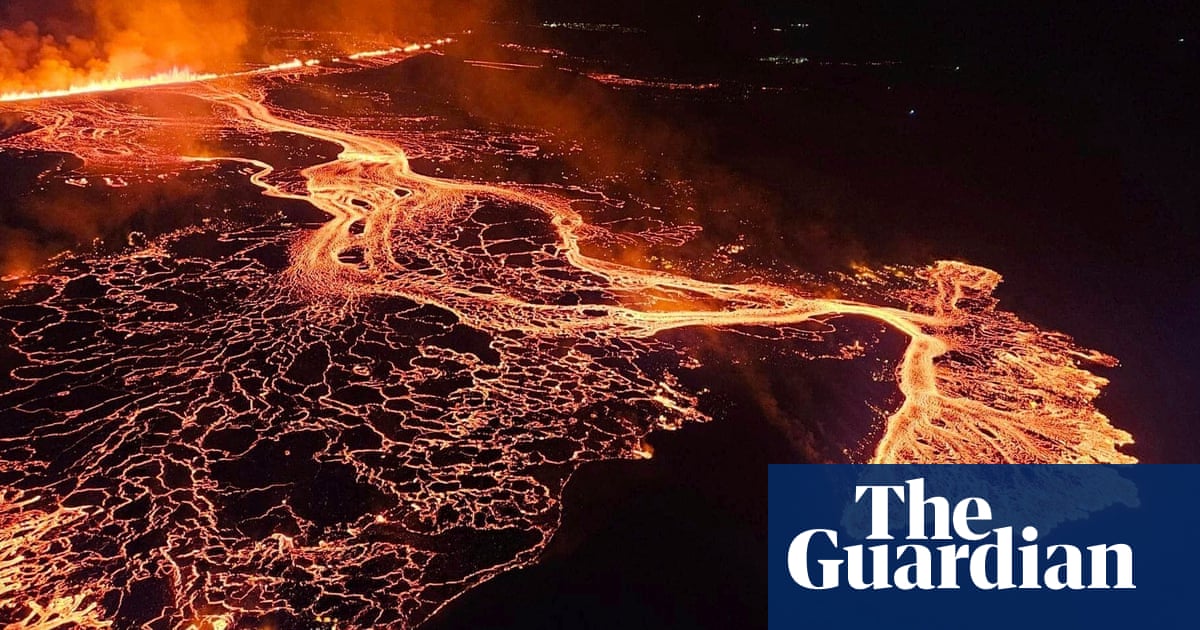A volcano in south-western Iceland has erupted for the sixth time since December, spewing lava through a new fissure on the Reykjanes peninsula.
Live video images showed orange lava bursting out of a long fissure, illuminating billowing smoke rising up into the night sky.
“A volcanic eruption has begun. A fissure has opened east of Sylingarfell,” the Icelandic meteorological office (IMO) said in a statement, adding that the eruption had started at 9.26pm local time after a series of earthquakes.
The IMO initially estimated the length of the fissure at 1.4km (0.86 miles), adding in a later statement that it had extended to 3.9km in 40 minutes.
It said that there was still “considerable seismic activity” at the northern end of the fissure more than an hour after the start of the eruption.
A 4.0-magnitude earthquake was recorded at 10.37pm, according to the IMO.
Iceland’s national airport and air navigation service provider Isavia said flights to and from Iceland were operating normally despite the continuing eruption.
The most recent eruption on the Reykjanes peninsula, home to 30,000 people or nearly 8% of the country’s total population, ended on 22 June after spewing fountains of molten rock for 24 days.
The eruptions show the challenge faced by the island country of nearly 400,000 people as scientists warn that the Reykjanes peninsula could face repeated events for decades or even centuries.
Since 2021 there have been nine eruptions on the peninsula, following the reactivation of geological systems that had been dormant for 800 years.
In response, authorities have constructed barriers to redirect lava flows away from critical infrastructure, including the Svartsengi power plant, the Blue Lagoon outdoor spa and the fishing village of Grindavik.
The chief of police of the Sudurnes region, Ulfar Ludviksson, told Icelandic media that the evacuation of Grindavik was going well. He added that 22 or 23 houses in the village were occupied.
Most of Grindavik’s 4,000 residents had evacuated in November, prior to a December eruption, and while residents have since been allowed to return in between eruptions, only a few have opted to stay overnight.
Speaking to Icelandic public broadcaster RUV, Magnus Tumi Gudmundsson, professor of geophysics at the University of Iceland, said that unlike previous eruptions there was little activity on the fissure’s southern end – the direction of Grindavik.
“So if this continues as expected, there is no lava flowing near Grindavik. I think we have to consider it good news,” Gudmundsson told the broadcaster.
The professor cautioned that the “night is young and we must continue to monitor this” but said that in general “it’s a more favourable position than the last time”.
The IMO had warned for weeks that another eruption was likely and said on Monday that seismic activity indicated a buildup of pressure to magma accumulation under Svartsengi, where a power plant that supplies electricity and water to about 30,000 people on the peninsula is located.
The Svartsengi plant was evacuated and has largely been run remotely since the first eruption in the region in December.
Iceland is home to 33 active volcano systems, the highest number in Europe.
It straddles the Mid-Atlantic Ridge, a crack in the ocean floor separating the Eurasian and North American tectonic plates.
Agence France-Presse, Reuters and Associated Press contributed to this report

